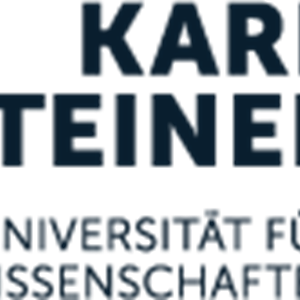
Mechanical Properties of Biological Tissues Described the Easy Way
Simplified calculation model for tissue properties developed at Karl Landsteiner University for Health Sciences Krems (Austria)
Krems (Austria), February 16th, 2022 – Viscous mechanical properties of biological tissues can now be described more easily than before. This is shown by a recently published paper of a team of the Karl Landsteiner University of Health Sciences Krems. The team demonstrates that an established mathematical model for soft biological tissues can be greatly simplified, allowing extensive time and cost savings.
Whether a tissue is diseased or healthy can often be diagnosed on the basis of its mechanical properties – if these are known, described appropriately and compared objectively. Mathematical constitutive models have been developed precisely for this purpose. They have proven themselves in practice but require extensive lab measurements and calibrations. A team from the Division of Biomechanics at Karl Landsteiner University of Health Sciences Krems (KL Krems) has now succeeded in radically simplifying an accepted model from the literature, thus enabling future time and cost savings in tissue characterization.
Hard Facts for Soft Tissue
The team, led by biomechanics professor and study director Dieter Pahr, tackled the "Adaptive Quasi-Linear Viscoelastic (AQLV) Model". This model describes properties of soft biological tissues, taking into account complex mechanisms under variable mechanical stress (tensile forces). In principle, this model is very flexible, since it applies to different load levels, but this flexibility comes at a high price, as Dieter Pahr explains: "The more flexible a mathematical model, the more material parameters have to be determined in the lab. In addition, as the number of parameters increases, comparability between different tissues becomes increasingly difficult. That's why we took another closer look at the existing AQLV model."
And in fact, the team succeeded in drastically reducing the parameters required for the model in an elaborate experimental work. In the traditional model the tissue to be examined is divided (mathematically) into three layers which have to be calibrated. This requires four loading experiments (incremental ramp-holding) for calibration in every case. "In practice, a total of 19 parameters thus have to be calculated in order to set up the model correctly," says Pahr. "We now have been able to reduce this to eight, which in the experiments allows for a time saving of 50 percent."
Sophisticated Experiments
The studies were carried out on pig muscle and liver, which are established experimental models. The team also benefited from the excellently equipped biomechanics laboratory at KL (Core Facility at Campus Krems) which focuses on the characterization of material properties of biological tissues in many different research projects. This project in particular was realized in cooperation with ACMIT GmbH in Wiener Neustadt and supported by the FTI funding programme of the province of Lower Austria. Thus, the Division of Biomechanics at KL is considered a leader in the assessment of bone properties, 3D printing of artificial biological tissues and the production of artificial organs for medical training purposes in Lower Austria.
Against the background of this extensive practical and experimental experience of his team, Pahr says: "Of course, the original AQLV model with its many parameters is well suited to make statements under certain circumstances. But in everyday medical or scientific practice, it often has to be considered whether the informative value thus obtained justifies the effort required. If it doesn’t, then the model we propose is a real asset in many cases." The paper now published in the Journal of the Mechanical Behavior of Biomedical Materials thus once again reflects the approach of research at KL Krems in the field of medical technology, which focuses on application-oriented findings with real benefits for clinical research.
Images available on request.
Original Publication: A parameter reduced adaptive quasi-linear viscoelastic model for soft biological tissue in uniaxial tension. O. J. Aryeetey, M. Frank, A. Lorenz, S-J. Estermann, A. G. Reisinger, D. H. Pahr. J Mech Behav Biomed Mater Vol. 126, Feb. 2022, doi.org/10.1016/j.jmbbm.2021.104999
About Karl Landsteiner University of Health Sciences
At Karl Landsteiner University of Health Sciences (KL) in Krems, the comprehensive approach to health and disease is a fundamental objective for research and teaching. With its Europe-wide recognized bachelor-master system, KL is a flexible educational institution that is tailored to the needs of students, the requirements of the labor market as well as the scientific challenges. Currently KL hosts about 600 students in the fields of medicine and psychology. The four university hospitals in Krems, St. Pölten, Tulln and Eggenburg ensure clinical teaching and research at the highest quality level. In research, KL focuses on interdisciplinary fields with high relevance to health policy - including medical technology, molecular oncology, mental health and neuroscience, as well as water quality and related health aspects. KL was founded in 2013 and accredited by the Austrian Agency for Quality Assurance and Accreditation (AQ Austria). www.kl.ac.at/en
Scientific Contact
Prof. Dieter Pahr
Department Anatomy and Biomechanics
Division Biomechanics
Karl Landsteiner Private University of Health Sciences
Dr.-Karl-Dorrek-Straße 30
3500 Krems / Austria
T +43 2732 72090 330
E dieter.pahr@kl.ac.at
Karl Landsteiner University of Health Sciences
Barbara Peutz
Communications, PR & Marketing
Dr.-Karl-Dorrek-Straße 30
3500 Krems / Austria
T +43 2732 72090 230
E barbara.peutz@kl.ac.at
W http://www.kl.ac.at/
Copy Editing & Distribution
PR&D – Public Relations for Research & Education
Dr. Barbara Bauder
Kollersteig 68
3400 Klosterneuburg / Austria
T +43 664 1576350
E bauder@prd.at
W http://www.prd.at/

Editor Details
-
Company:
- PR&D
-
Name:
- Till C. Jelitto
- Email:
-
Telephone:
- +4315057044
- Website:
